
GRE Prep Club Daily Prep
Thank you for using the timer - this advanced tool can estimate your performance and suggest more practice questions. We have subscribed you to Daily Prep Questions via email.
Customized
for You
Track
Your Progress
Practice
Pays
Not interested in getting valuable practice questions and articles delivered to your email? No problem, unsubscribe here.
In the figure shown, what is the value of X ?
[#permalink]
 25 Feb 2017, 09:32
25 Feb 2017, 09:32
2
1
Expert Reply
2
Bookmarks
Question Stats:
 90% (01:03) correct
90% (01:03) correct
 9% (01:47) wrong
9% (01:47) wrong  based on 147 sessions
based on 147 sessions
Hide Show timer Statistics
Attachment:
#GREpracticequestion In the figure shown, what is the value of X.jpg [ 12.03 KiB | Viewed 60009 times ]
In the figure shown, what is the value of X ?
X = Enter your value
Show: :: OA
160 °
Re: In the figure shown, what is the value of X ?
[#permalink]
 04 Mar 2017, 18:01
04 Mar 2017, 18:01
5
Expert Reply
Explanation
To help with discussion, we have labeled points on the figure.
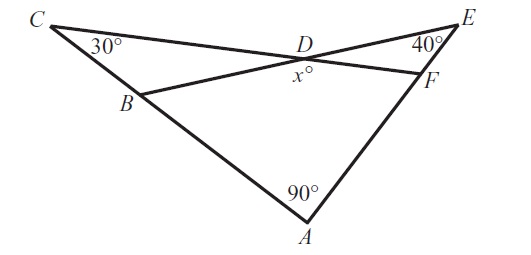
Start with triangle ACF. Angle A is 90° and angle C is 30°, so angle AFC must be 60° (180° – 90° – 30° = 60°).
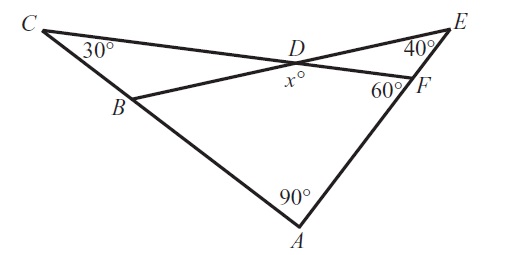
If AFC is 60°, then EFD must be 120° (180° – 60° = 120°).
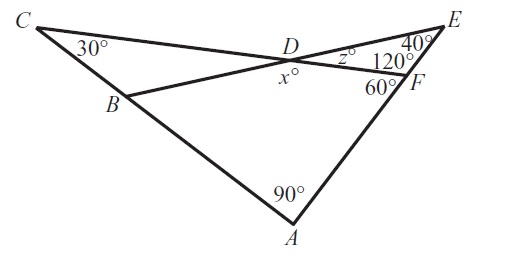
Now you can find angle FDE, which we have called angle z: (180° – 120° – 40° = 20°). If z = 20°, then x = 160°, because x + z = 180°.
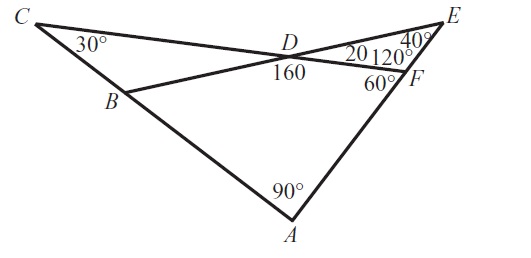
Hence x x = 160°.
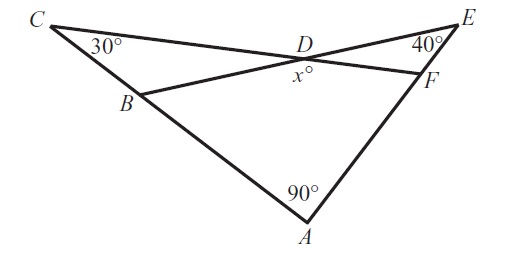
di new.jpg [ 17.45 KiB | Viewed 104745 times ]
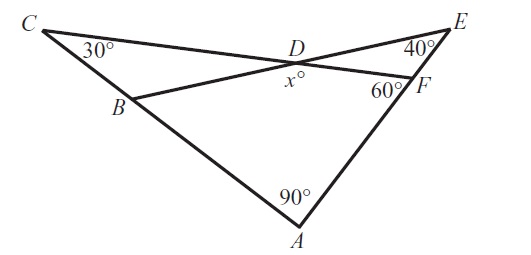
di new1.jpg [ 17.99 KiB | Viewed 104938 times ]
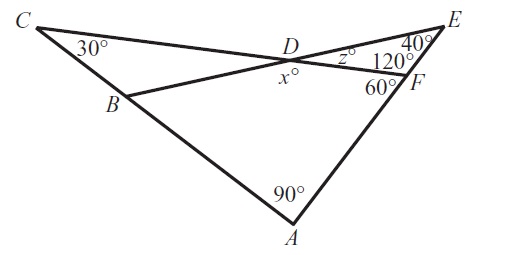
di new2.jpg [ 18.88 KiB | Viewed 104684 times ]
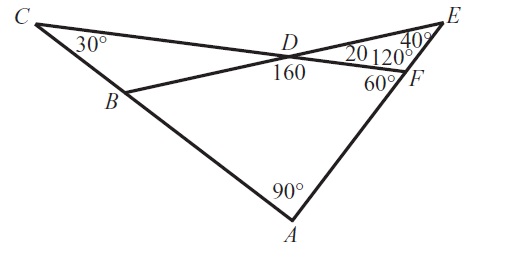
di new3.jpg [ 19.44 KiB | Viewed 104653 times ]
To help with discussion, we have labeled points on the figure.
Start with triangle ACF. Angle A is 90° and angle C is 30°, so angle AFC must be 60° (180° – 90° – 30° = 60°).
If AFC is 60°, then EFD must be 120° (180° – 60° = 120°).
Now you can find angle FDE, which we have called angle z: (180° – 120° – 40° = 20°). If z = 20°, then x = 160°, because x + z = 180°.
Hence x x = 160°.
Show: :: Img
Attachment:
di new.jpg [ 17.45 KiB | Viewed 104745 times ]
Attachment:
di new1.jpg [ 17.99 KiB | Viewed 104938 times ]
Attachment:
di new2.jpg [ 18.88 KiB | Viewed 104684 times ]
Attachment:
di new3.jpg [ 19.44 KiB | Viewed 104653 times ]
General Discussion
Re: In the figure shown, what is the value of X ?
[#permalink]
 20 Jan 2019, 18:23
20 Jan 2019, 18:23
1
Bookmarks
Tricky







